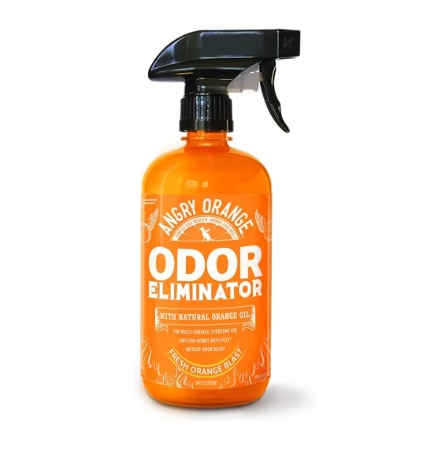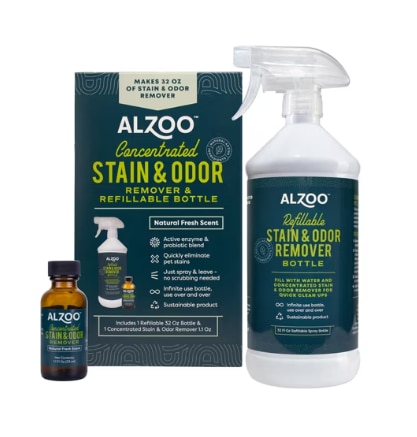Spring is upon us. It’s the time of year when the scent of fresh blooms floats through windows, airing out winter’s stale spaces.
Or is it?
If your home stinks even with the windows open, odor is lurking in unexpected places.
Before you reach for scented products, pinpoint where the funk is coming from. Then try these eco-friendly natural odor eliminators so you can do spring cleaning the smart way.
Here are six household items that can harbor odors and how to nix their nasty smells naturally.
Natural odor eliminator solutions
Dishwasher
If you don’t rinse your dishes before putting them in the dishwasher, food is probably stuck in the machine’s filter. Even if you wipe food from plates, oil and other residue could be in the filter.
Don’t fret. The filter is easily removable, and you can rinse it under running water. If gunk remains stuck to it, give it a good rub, and use dish soap if needed. Also check the screen at the base of the machine, and rinse it or clean it if needed.
Another surprising part of your dishwasher might need cleaning too: its roof. Check for mold, which can easily develop, especially if you don’t use the dry cycle (to save energy, of course).
Get rid of the mold with detergent or a mixture of white vinegar and water (white vinegar kills mold) on a sponge. Be sure to wear gloves.
To save yourself from dealing with mold again, wipe down the machine’s roof and walls after every cycle, which eliminates post-wash moisture. Keep the door open for a few hours after each wash.
Garbage disposal and kitchen drain
Put a few thin slices of lemon or lime in your drain, and then run your disposal. To step it up and actually clean your drain, put in a spoonful of baking soda and a handful of ice cubes, along with the citrus (you’ll get the added bonus of sharpening your blades, thanks to the ice).
It’s also a good idea to clean the rubber lining at your sink’s drain opening. Use a little water to make a baking soda paste on an old sponge or a rag. While wearing gloves, rub both sides of the ring with the paste, until your sponge or rag comes out clean. Throw the sponge away, but if you want to hot-wash the rag in your washing machine, you can (see “kitchen sponges,” below).
HVAC system
Heating and cooling systems have filters so that they can eliminate what you don’t want to breathe in, including stinky stuff. Tend to them smartly and you won’t need air freshener, which is almost always toxic to inhale, whether plug-in, spray or a scented candle.
Filters have a range of intensities, and you’ll need to choose what’s right for you. They come with MERV ratings from 1 to 16. Porous filters filter out less, as you might expect. Note that some brands have their own rating system.
As a rule, you should change your filters every three months — but the frequency depends a lot on how much filtering happens. If you rarely vacuum and your home has lots of dust or pet hair, your filter will gunk up more quickly than it would in a pristine home where no one wears shoes inside.
Kitchen sponges
The best eco-friendly odor eliminator for stinky sponges is to not use them — and use a dishcloth instead. The U.S. Department of Agriculture says you should wash dishcloths “often in the hot cycle of your washing machine.”
Microwaving or boiling sponges “may reduce some of the bacterial load,” according to the USDA. But “these methods alone are not adequate to ensure that your sponge will reduce potential cross-contamination of hands, kitchen counters, and food. If you use sponges, buy new ones frequently.”
Refrigerator
Look for the obvious first: Is your fridge holding food that’s beyond the pale? If so, toss it. Then check under bins and cracks for spills or wayward bits that are stinking things up.
Odor from food that’s gone bad can be hard to remove. Try the following, which you might need to repeat, according to the USDA. First, wipe the inside of your fridge with equal parts vinegar and water. Then wash it down with a 1:4 solution of baking soda and water.
To absorb nasty smells, put fresh coffee grounds or baking soda in an open container. Putting a cotton swab soaked with vanilla inside the freezer for 24 hours is an eco-friendly odor eliminator too.
Washing machine
Front loaders can be at-fault for foul odors. Most of them also come with self-cleaning cycles that use hot water on a fast spin to get rid of smelly gunk. That’s all your machine should need. Be sure to use yours — and don’t add vinegar to the cycle because it can damage your machine’s rubber parts should it have any.
To keep odors away, follow preventive measures every time you wash: Use a washcloth to wipe down the door gasket. Be thorough; you might need to soak up sitting water.
If you can remove your machine’s intake for detergent and water, do so and shake it dry, then wipe down its housing. Sounds like a lot of work, but it takes less than one minute. Finally, keep the door open.




